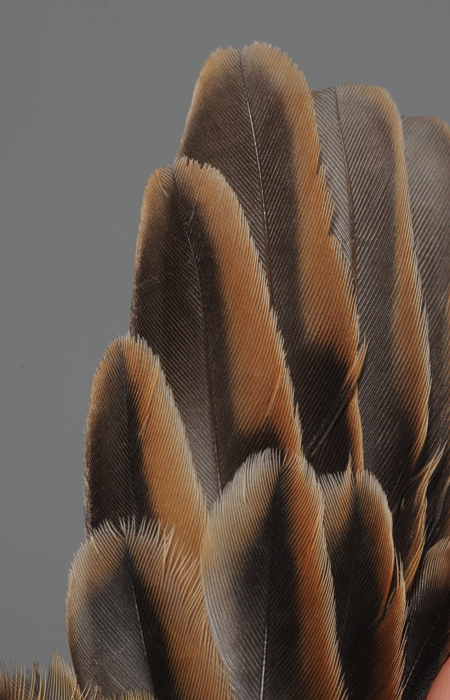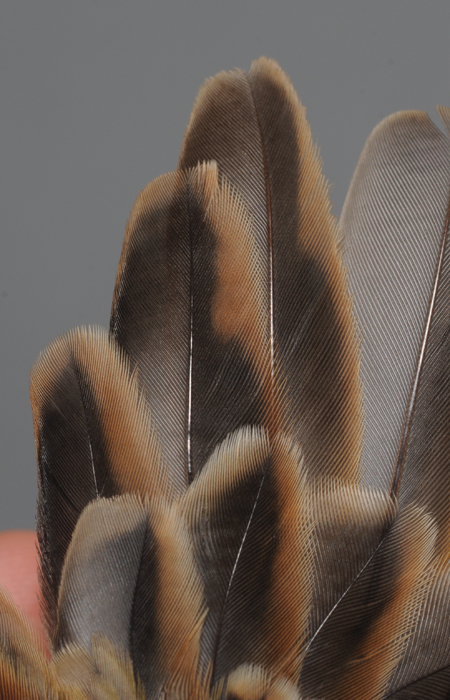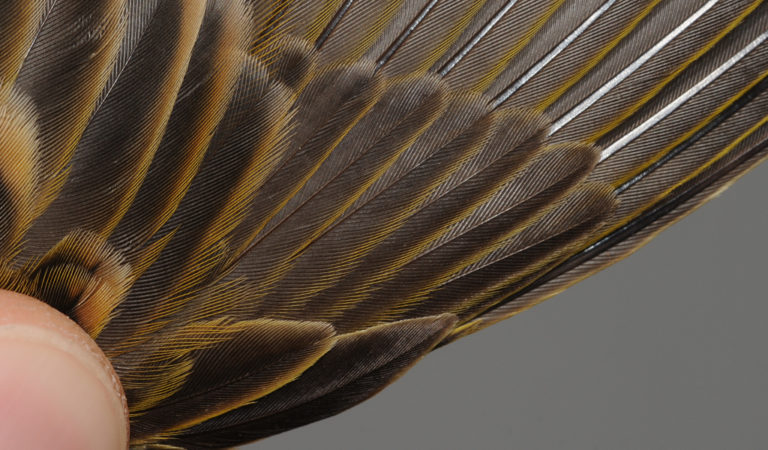

Yellowhammer
AGE – BEST CRITERIA:

1cy (male) October. Quite many 1cy, like here, show uniformly juvenile TT. Note the juvenile structure and wear and the rather brownish center. Compare to the state ande structure of the juvenile inner SS and the post-juvenile inner GC. [2KR45048]

1cy (female) October, showing a moult contrast where the innermost two TT are moulted post-juvenile, while the outer longer one is unmoulted juvenile. This contrast may sometimes be rather hard to see, but note the slight difference in wear (identical in the two inner feathers, more worn in the outer one) as well as in the colour and gloss of the centre, were the inner two TT are blackish and the longer one is more brownish. [2KR45006]

1cy (male) October. The juvenile PC shows a looser texture and slightly more worn tips and edges compared to adult birds. Further, the centre of the PC are often slightly paler brownish and less glossy than in adult, and the edges and tips are often less neat green/grey. However, there is a clearvariation, and some individuals are less easy to asses. [2KR44978]
More Emberiza citrinella:
Sexing autumn
Ageing spring
Sexing spring
Moult
Ringers’ DigiGuide is sponsored by: